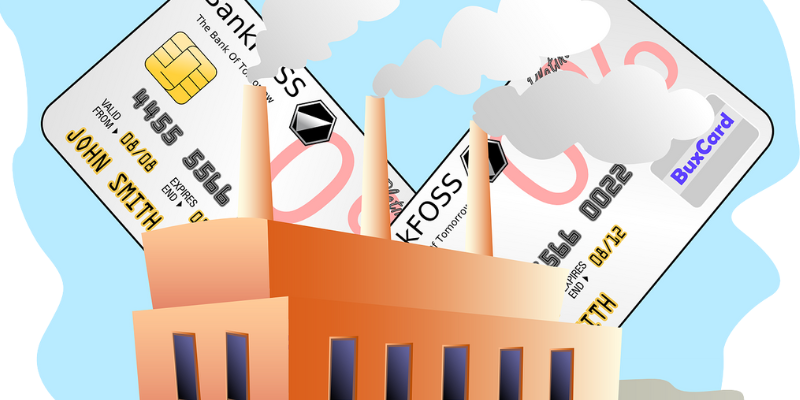Trade finance, a cornerstone of global commerce, is no exception. At the heart of trade finance lies the letter of credit (LC), a document that has facilitated international trade for centuries. However, as global trade becomes increasingly digital, the traditional paper-based LC process is proving to be cumbersome, time-consuming, and prone to errors. Enter letter of credit digitization—a game-changer that is revolutionizing trade finance and unlocking new opportunities for businesses worldwide.
What is a Letter of Credit?
Before going into digitization, let’s understand what a letter of credit is. A letter of credit is a financial document issued by a bank that guarantees payment to a seller, provided specific terms and conditions are met. It acts as a bridge of trust between buyers and sellers, particularly in international trade, where parties may not know each other well or operate under different legal systems.
Traditionally, processing an LC involves multiple parties buyers, sellers, banks, shipping companies, and customs authorities exchanging physical documents. While effective, this manual process is often slow, expensive, and vulnerable to fraud and human error.
Why Digitize Letters of Credit?
The digitization of letters of credit addresses many of the inefficiencies of the traditional system. Here are some key reasons why digitization is gaining traction:
- Speed and Efficiency: Digital LCs significantly reduce processing times by eliminating the need for physical document exchange. Transactions that once took weeks can now be completed in days or even hours.
- Cost Savings: By reducing paperwork, courier costs, and administrative overhead, digitization lowers the overall cost of trade finance.
- Enhanced Security: Digital systems use encryption and blockchain technology to ensure that documents are tamper-proof and transactions are transparent, reducing the risk of fraud.
- Improved Accessibility: Digital LCs make trade finance more accessible to small and medium-sized enterprises (SMEs), which often struggle with the complexities of traditional processes.
- Environmental Benefits: By minimizing the use of paper and physical transportation, digitization contributes to a more sustainable and eco-friendly trade finance system.
How Does Letter of Credit Digitization Work?
Digitizing an LC involves replacing physical documents with electronic ones and using digital platforms to manage the entire process. Here’s how it typically works:
- Application and Issuance: The buyer applies for an LC through an online platform. The issuing bank reviews the application and issues a digital LC to the seller’s bank.
- Document Submission: The seller uploads digital versions of required documents, such as invoices and shipping receipts, to the platform.
- Verification and Approval: The platform uses advanced technologies like optical character recognition (OCR) and blockchain to verify the authenticity of documents and ensure compliance with LC terms.
- Payment Execution: Once all conditions are met, the issuing bank releases payment to the seller.
- Real-Time Tracking: Digital platforms provide real-time updates on the status of the LC, enhancing transparency and communication among all parties.
The Role of Blockchain in Digitization
Blockchain technology plays a pivotal role in the digitization of letters of credit. By creating a decentralized and immutable ledger, blockchain ensures that all transactions are secure, transparent, and easily traceable. Each step in the LC process is recorded as a “block” in the chain, preventing unauthorized alterations and providing a single source of truth for all parties.
For example, if a seller uploads a shipping document, blockchain technology verifies its authenticity and timestamps the entry. This eliminates disputes and ensures that everyone involved has access to the same accurate information.
Challenges and Solutions
While the benefits of digitizing letters of credit are clear, the transition is not without challenges. Here are some common hurdles and potential solutions:
- Resistance to Change: Many businesses are accustomed to traditional methods and may be hesitant to adopt digital solutions.
Solution: Education and training programs can help stakeholders understand the advantages of digitization and build confidence in new systems. - Interoperability Issues: Different digital platforms may not be compatible with each other, creating inefficiencies.
Solution: Industry-wide standards and collaboration among technology providers can ensure seamless integration. - Regulatory Compliance: Navigating the regulatory landscape for digital trade finance can be complex.
Solution: Governments and financial institutions must work together to establish clear guidelines and promote cross-border cooperation. - Cybersecurity Risks: Digital systems are vulnerable to cyberattacks and data breaches.
Solution: Robust cybersecurity measures, including encryption, multi-factor authentication, and regular audits, are essential to protect sensitive information.
The Future of Trade Finance
The digitization of letters of credit is just the beginning of a broader transformation in trade finance. As technologies like artificial intelligence (AI), machine learning, and the Internet of Things (IoT) continue to evolve, they will further streamline processes and enhance decision-making.
For instance, AI-powered algorithms can analyze trade data to identify patterns and predict risks, while IoT devices can provide real-time updates on the location and condition of goods in transit. Together, these innovations will create a more efficient, secure, and inclusive global trade ecosystem.
Why This Matters for Young Entrepreneurs
For young entrepreneurs and small business owners, the digitization of letters of credit opens up new opportunities to participate in global trade. By reducing barriers such as high costs and complex processes, digital LCs make it easier for startups and SMEs to expand their reach and compete on an international scale.
Imagine being able to export your products to another continent with just a few clicks, knowing that payment is guaranteed and all documentation is handled seamlessly. That’s the power of letter of credit digitization.
Conclusion
The digitization of letters of credit is a vital step toward modernizing trade finance and aligning it with the demands of the digital age. By embracing this transformation, businesses can unlock new efficiencies, reduce costs, and tap into a world of opportunities. For the next generation of entrepreneurs, this is a chance to redefine global trade and build a more connected and sustainable future.
As we move forward, collaboration among governments, financial institutions, and technology providers will be key to ensuring that digitization benefits everyone, from multinational corporations to small local businesses. The future of trade finance is digital, and the time to embrace it is now.



































